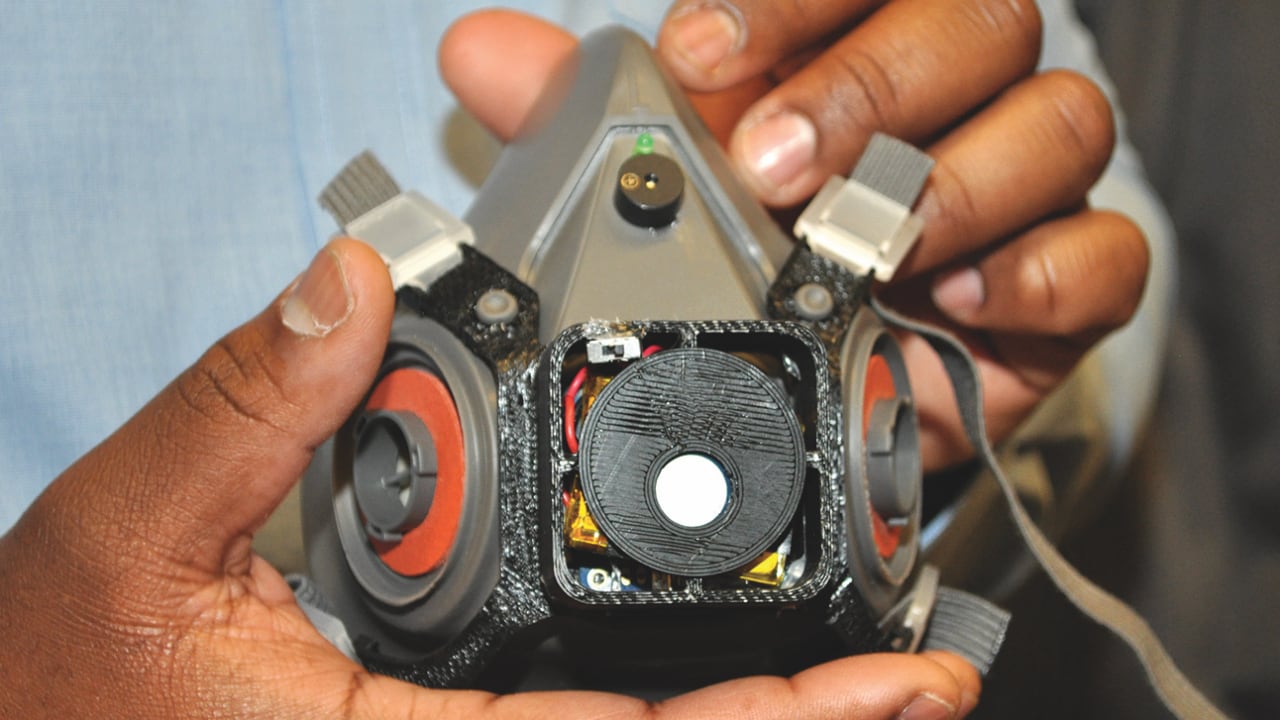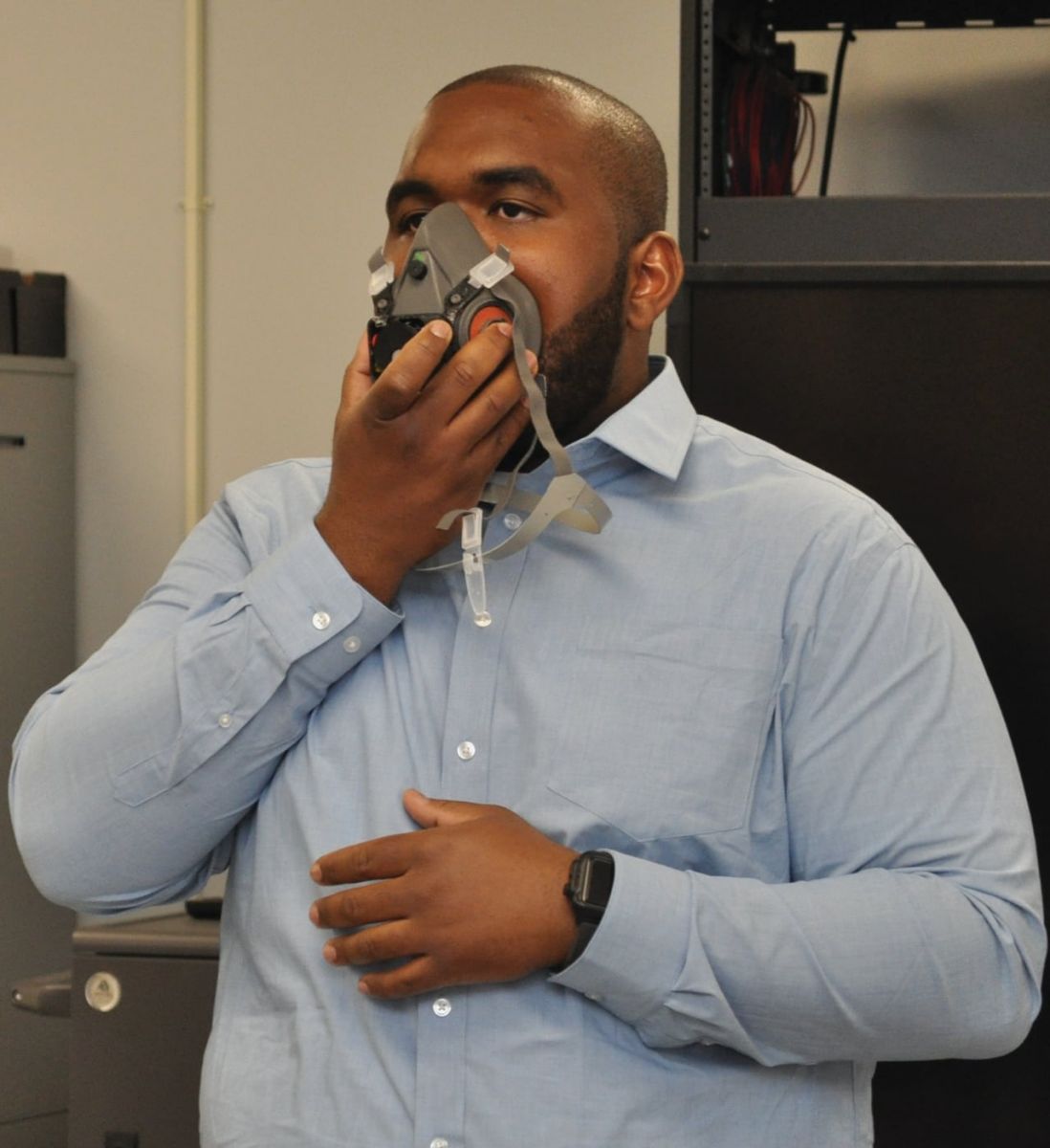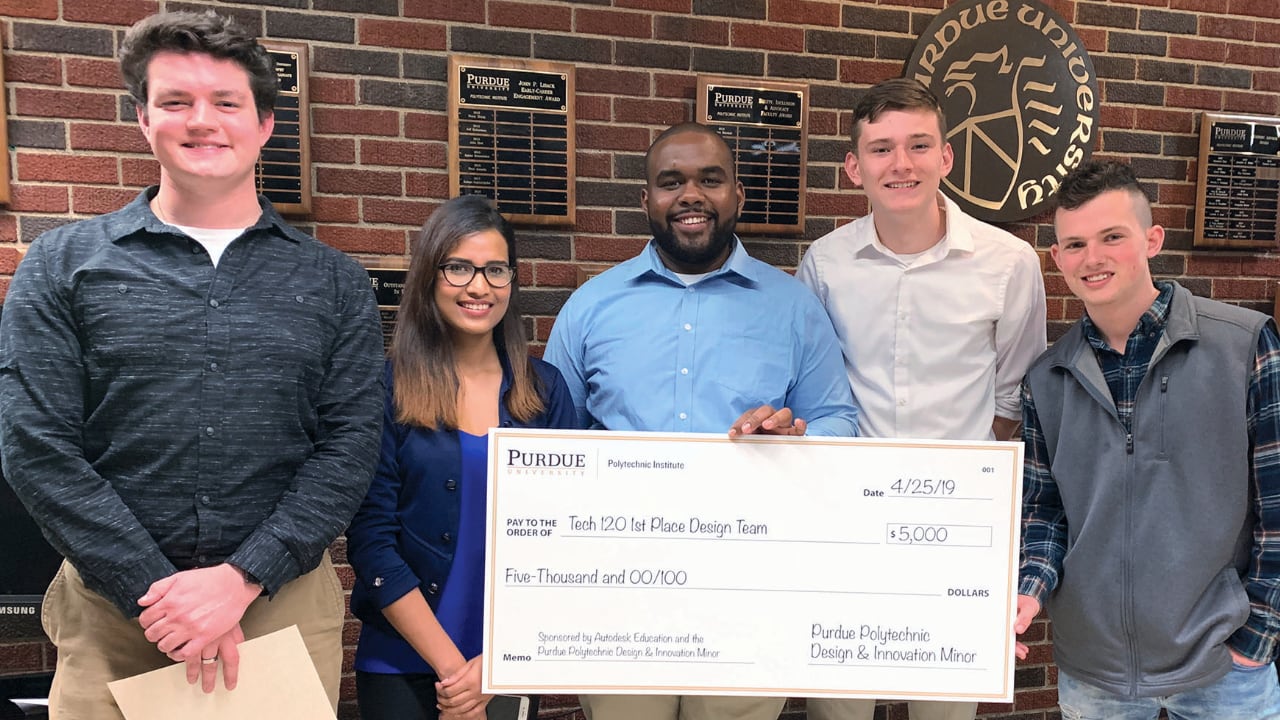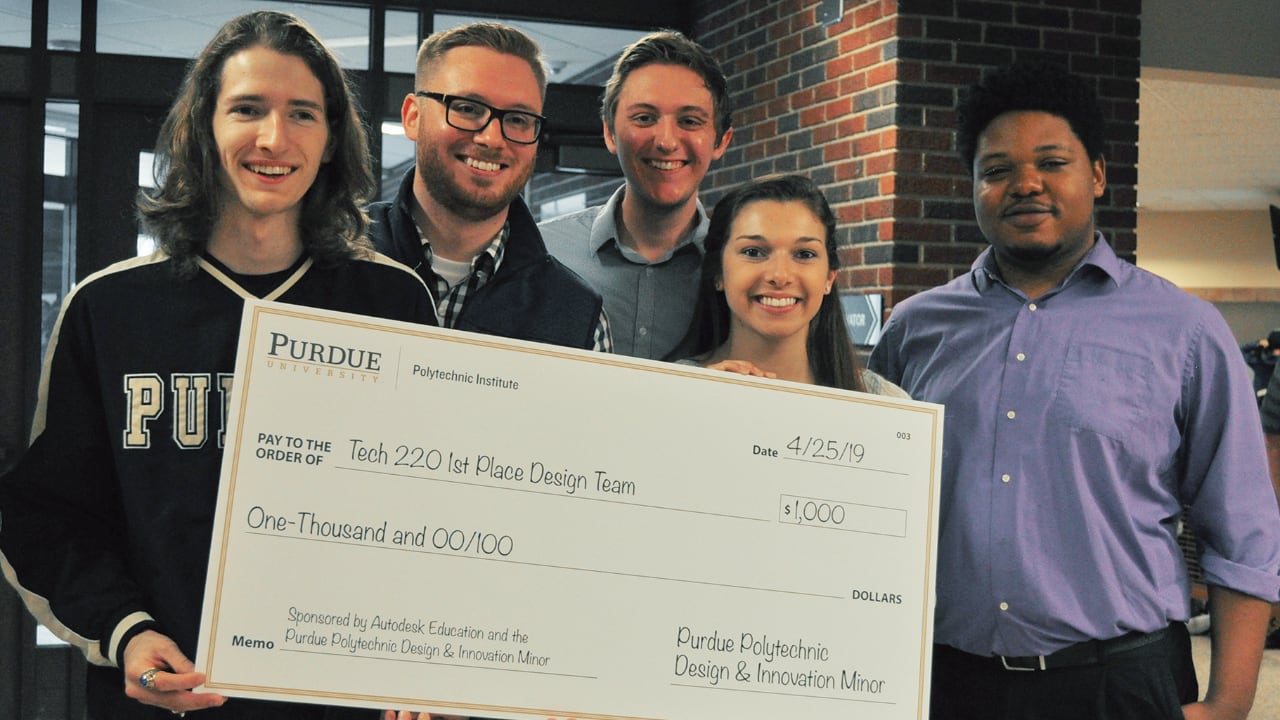
The Design and Innovation Challenge returned to the lobby of Knoy Hall during the spring semester. The competition is the brainchild of the Department of Technology Leadership & Innovation (TLI) and was sponsored by Autodesk, manufacturers of 3D design and engineering software.
Student teams competed for a share of $10,000 in prize money and an additional $10,000 in scholarships to enroll in the Polytechnic Design and Innovation minor. Votes from audience members decided the winner of the Crowd Favorite award, worth an additional $500 cash to the winning team.
Design thinking in technology
“Students in TECH 12000 addressed open-ended, local problems that have global significance,” said Nathan Mentzer, associate professor of engineering/technology teacher education. “They then devised solutions for those challenges by applying the principles of human-centered design, which incorporates the users’ perspectives in the problem-solving process.”
Teams were made up of 4-5 students from various majors and backgrounds. While the challenges hone the students’ problem-solving skills, the team dynamics allow students to polish their interpersonal communications skills. And their final presentations to the judges can reveal which teams practiced their presentation skills.
The TECH 12000 students presented their technological ideas and design rationales to a panel of judges made up of Polytechnic faculty Shawn Farrington, continuing term lecturer; Dawn Laux, clinical associate professor and associate department head in the Department of Computer and Information Technology; Greg Strimel, assistant professor of engineering/technology teacher education; Jared Vanscoder, Autodesk program manager; and Tim Peoples, managing director of Purdue Foundry. The judges deliberated over the five presentations for nearly an hour.
“The competition was very intense,” said Strimel.
The judges reviewed each team’s design process to ensure the students had incorporated all the required steps. They took special note of each product’s ensuing design iterations that resulted from consumer testing and feedback. One group had taken a prototype of their product to Wilmeth Active Learning Center (WALC) and interviewed passers-by who interacted with the product.
“I loved seeing the video showing people at WALC testing their product out,” said Laux.
First place winner: 3M RED (respiratory emergency defense) series
 Jordin Arthurs, sophomore in mechanical engineering technology, and his team members – Jacob Mellady, sophomore in the College of Health and Human Sciences; Joel Quasebarth, first-year student in construction management technology; and Mason Wilcox, junior in aeronautic engineering technology – chose to improve a design of respiratory safety mask.
Jordin Arthurs, sophomore in mechanical engineering technology, and his team members – Jacob Mellady, sophomore in the College of Health and Human Sciences; Joel Quasebarth, first-year student in construction management technology; and Mason Wilcox, junior in aeronautic engineering technology – chose to improve a design of respiratory safety mask.
During their presentation, they noted that existing respiratory masks offer a false sense of security because “current respiratory masks do not have an internal warning system, which leaves users vulnerable to diseases, cancers and death.” And by the time a body’s “internal warning system” reacts to dangerous fumes with symptoms, such as dizziness or shortness of breath, the ensuing loss of consciousness can have deadly consequences.
“People working with harmful chemicals need a way of being warned of toxic gases,” said Arthurs.
The team devised a working prototype of a respiratory mask, which they modified with a personalized monitoring system that calculates the concentration of gases in the mask. Once the mask is calibrated to its user’s unique natural carbon dioxide levels, sensors in the mask provide an early warning of any toxic gases that might be entering the respirator.
Arthurs spoke highly of the competition.
“I learned how to sell and market a product so it can appeal to the intended user,” Arthurs said. “I would definitely recommend the class to someone who likes to tinker because it can give one of your inventions needed validation.”

Designing technology for people
Like their counterparts in TECH 12000, students in TECH 22000 (Designing Technology For People) defined an open-ended problem, but their process utilized ethnographic techniques, such as observing people interacting with the technology, and then used those observations to create design solutions.
“By spending time observing, asking questions and listening to end users, TECH 220 students learn how to represent those constituents’ views and recommend innovative design solutions,” said Todd Kelley, associate professor of industrial technology.
First place winner: Musical Shares

The winning team from TECH 22000 had been assigned to identify a problem that people were having and design a product to help alleviate that problem. The team’s open-ended assigned topic was simply “music.”
Through surveys that they administered to the public, the team learned that people aren’t necessarily looking for new music technology, such as headphones.
“We learned they’re looking for experiences to find out about new music,” said Isaiah Thomas, senior in human resource development.
“And, through our ethnographic research, we found that people want to share new music,” said Brandon Shimkus, junior in industrial engineering technology. “But with the way everything’s been digitalized, it’s really hard for people to bring back those social interactions. So we came up with an idea that revolved around bringing people together to share their favorite music.”
The team developed Musical Shares, a play on words of “musical chairs.” The face-to-face game was designed to help people connect and build relationships over their mutual love of and interest in music.
“Musical Shares is set up like ‘speed networking’, but instead of having a two-person, one-on-one interaction, we devised a method for a three-person, one-on-one-on-one interaction,” said Shimkus. “The three-person aspect helps ease any anxiety of meeting and interacting with someone new. Everyone gets time to share their song and explain why they like it. Then, there are notifications that show when it’s time to rotate to a new group. That way, everyone gets a new song, and everyone gets a chance to share their experience.”
“Meeting new people might seem awkward at first,” said Thomas, “but as people began to share about things they already like, it became easier to talk about something else, and talk to someone else about it.
“From beginning to end, this project was a truly gratifying experience,” said Derek Whitis, senior in industrial engineering. “We started from nothing and were sent out in the world to find some issues that people were having, specifically with music. Throughout the semester, after following a rigorous ideation process, we created a product that we are not only passionate about, but one we know can help solve problems.”
Colette Rosenbarger, junior in human resource development, and Shawn Makulec, senior in industrial engineering, rounded out the winning Tech 220 team.

